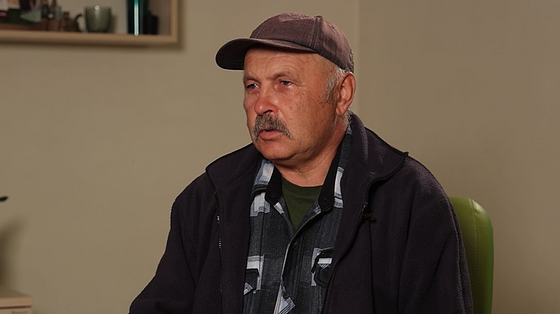"There were 5 operating tables on the 1st floor. The temperature was -8. We cut 4 shells of clothes each. The doctors were ready to work. The hospital was ready to receive a large number of wounded. We performed prosthetic arteries. We were saving limbs. We admitted 50 people a day. They had to be scattered so that the hospital was ready to receive new wounded. They were evacuated to the "big land" by helicopters.
When the encirclement happened, we realised that we needed to create a base. These were Hospital No. 2, the oncology centre, and the emergency hospital. We had a team of volunteers. We covered the windows with sand. Dmytro STEPNOV and his team helped. In a few days, the hospital became a fortress. We brought food, clothes, and treats.
There was no information. People were looking for communication. The military, who had relatives in the city, were very worried. What to do? It put a lot of pressure on their performance.
At first, I saw my wife. But then the situation worsened. On 9 March, I stopped 200 metres from the second hospital. I waited for my wife until she returned. An air bomb was dropped near the oncology clinic. The house on Myru Avenue has no windows. Poplars like stumps. Without a single branch. The road is littered with rubbish. I could barely drive through.
Smoke was billowing. Police school. 9-10 March. The house was on fire. There were no more fire trucks. That's how our city was being destroyed before our eyes.
In the morning of 12 March, we went to visit our wife. The intersection of Pylyp Orlyk and Budivelnykiv streets. A tank. It turned its turret towards us. Machine guns pointed at us. The distance was about 100 metres. We raised our hands. They stopped the car. They waved their hands. We started driving. The other car was shot at. A mine hit the asphalt 20 metres away. We are safe. We were lucky. We tried to drive to Shevchenko Street. We also ran into an armoured personnel carrier. We drove back.
In Kalmius district, there are many graves along the roads under the windows of houses.
There was no logistics. Then they started bringing civilian wounded. Amputations, abdominal surgeries. There were children. I remember a girl of 16 years old. She was sitting by the window. She was reading a book. A mine hit. Part of her nose was cut off, her face and teeth were mutilated. I restored her upper lip and corrected her nasal breathing. It is a horror to restore the whole structure of the face in occupied Mariupol. Children were dying.
The last week. It's hard to say where to take the bodies. Everything on the territory of the hospital is blocked. We took them to the morgue. But everything is full there too. Everyone was living one day at a time. The number of wounded was off the charts. I have never seen such injuries in my life.
15 March - flight to the hospital. There were three mines. One person was killed and one was wounded. I realised that we were under targeted fire. On 16 March I left. That's when the bombs were dropped. There were deaths in the operating room. Some of the doctors went to the bunker at Azovstal and the Ilyich plant. The military hospital stopped working on 16 March.
My son-in-law is fighting. A close person is in captivity. Part of the family is in Europe... Either we fight, or we will be destroyed!" said Mikhailo PASICHNYI, a resident of Mariupol, a doctor, to the Museum.




























.png)



